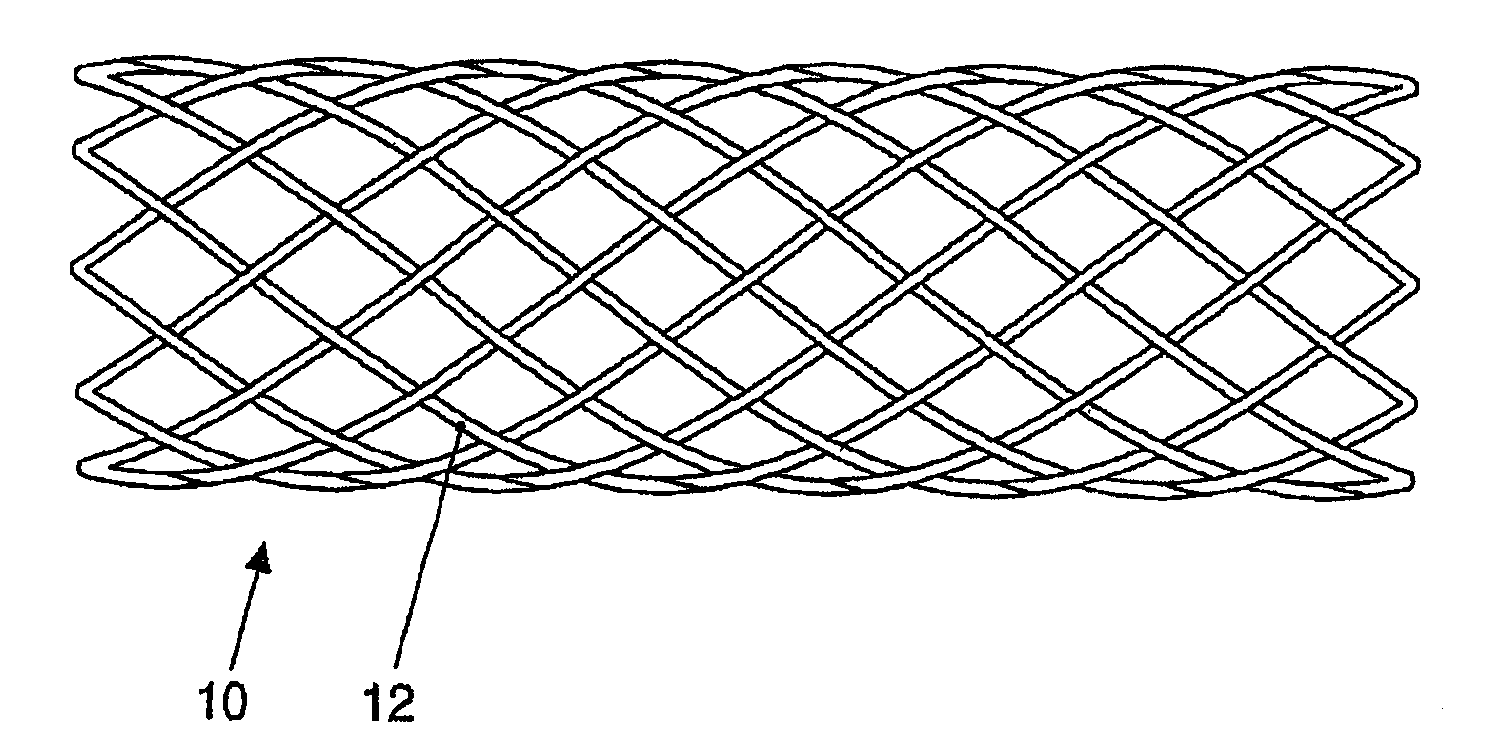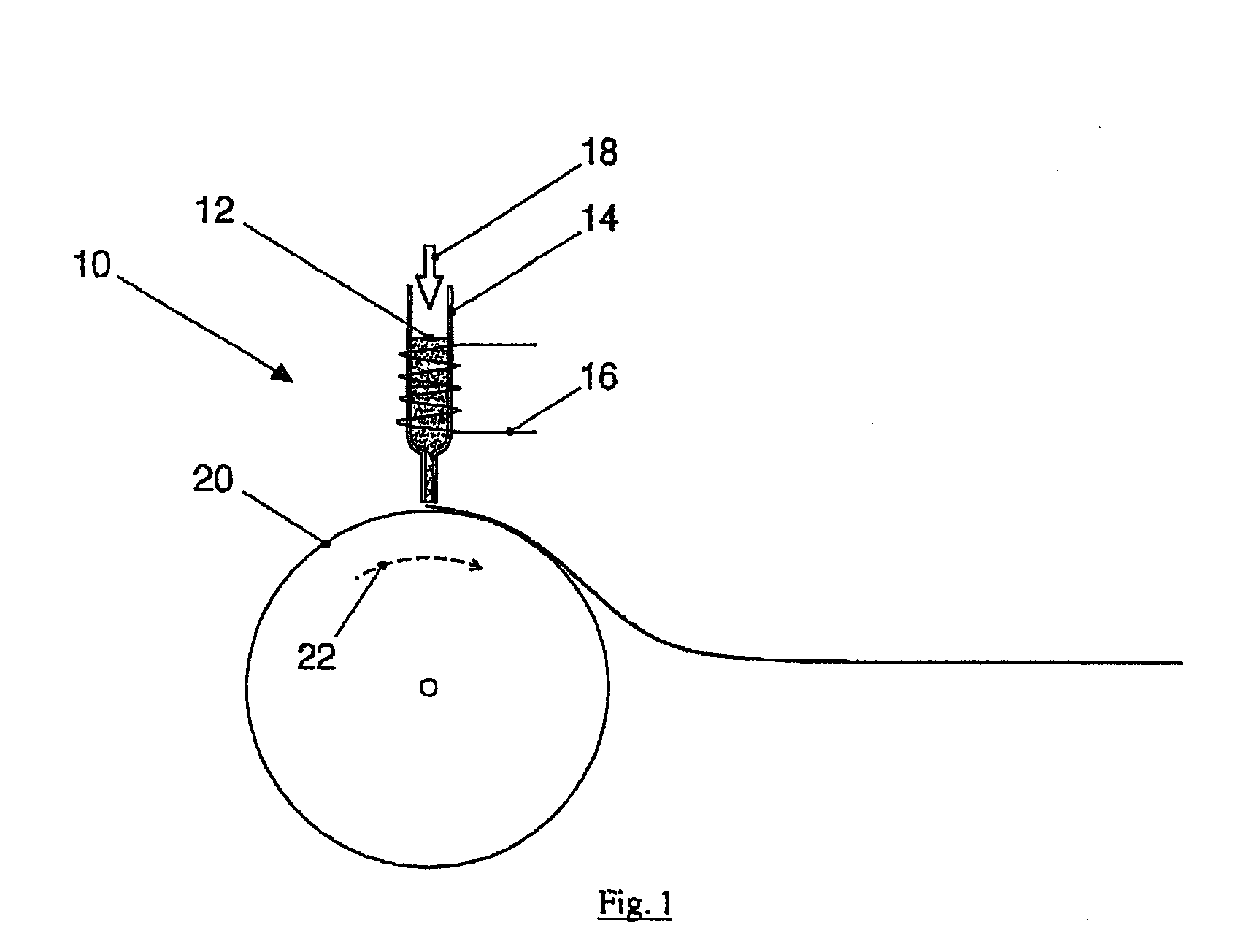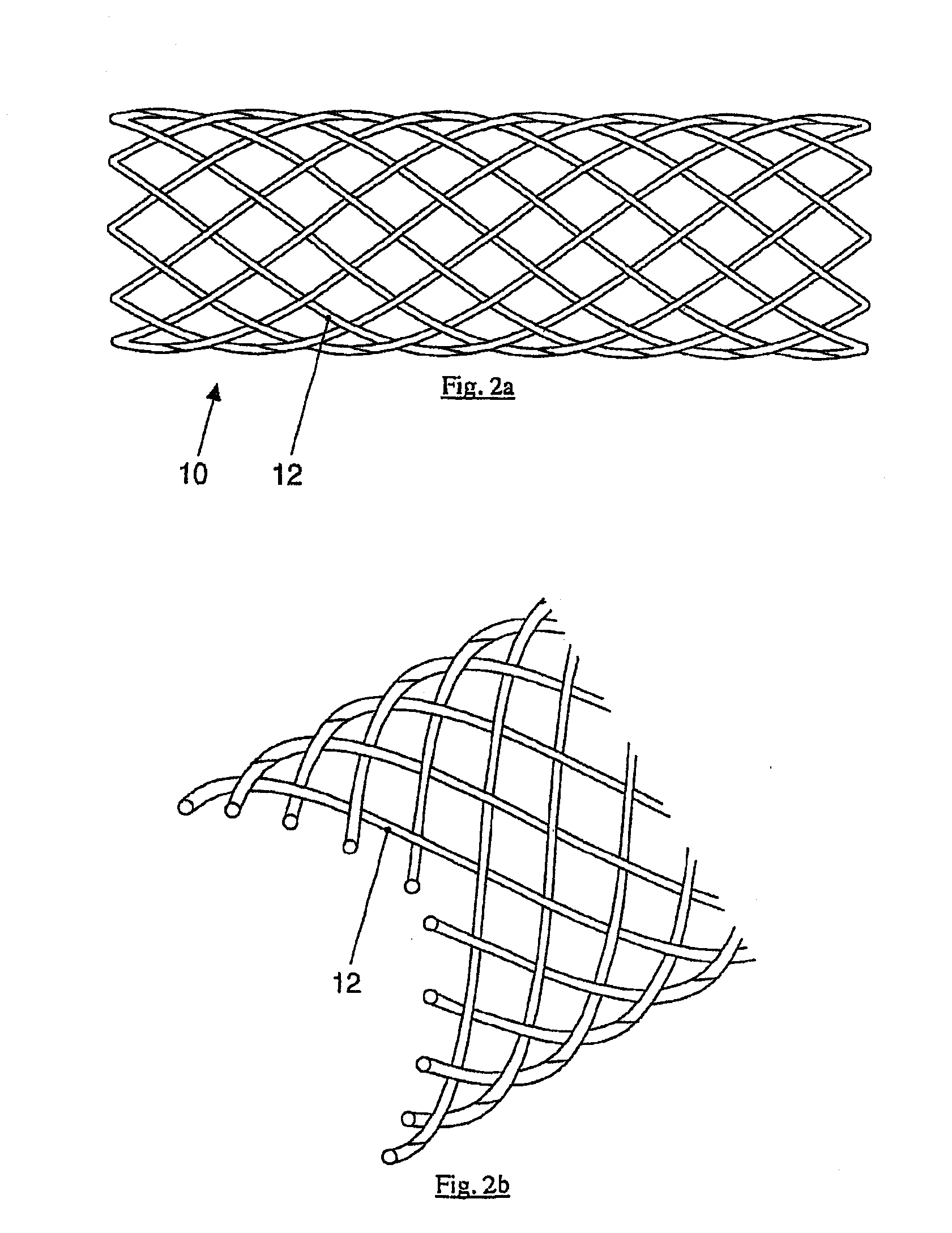[0009]The present invention produces medical implants from crystalline magnesium or magnesium alloys in a targeted way depending on the mechanical strain having reinforcement fibers made of a biocorrodible, amorphous, or
nanocrystalline alloy having a main component entirely or partially selected from the group consisting of Mg, Ca, Fe, and Y. The amorphous or nanocrystalline alloys are distinguished in relation to the known crystalline
metal alloys by their typically increased strength and a delayed
in vivo corrosion behavior. A
composite material having completely novel mechanical properties results by embedding amorphous or nanocrystalline fibers in a crystalline matrix, which is thus more easily deformable. The amorphous or nanocrystalline fibers are supported over their entire area by the crystalline matrix. Significantly higher elasticity in comparison to an
implant which is exclusively manufactured from amorphous or nanocrystalline alloys or contains larger coherent volume proportions of these alloys results for the implant of the present invention. Simultaneously, the increase of strength caused by the amorphous and nanocrystalline structure of the fibers is largely maintained, or is even exceeded, by the composite material thus resulting due to the additional supporting effect on the fibers. The fibers may additionally have their shape tailored optimally to the mechanical strains of the component.
[0015]Theoretically, any alloy may be obtained in amorphous or nanocrystalline modification by suitable method control. Alloys which are especially suitable in practice and for the purpose of the present disclosure are distinguished by a favorable ratio of
glass transition temperature Tg and temperature of the melt T1 (as a result of the known Turnbull criterion; see, D. Turnbull, Metall Trans B (1981) 271). Furthermore, it is known that the addition of alloy components may result in the formation of eutectic phases in the melts and reinforced chemical and topological differences between the individual alloy components, e.g., in atomic size and in binding behavior, may prevent
crystal formation during the cooling of the melt.
[0037]The medical implants according to the present disclosure preferably contain fibers or wires made of the alloy, because they may be manufactured and processed easily and the danger of
crystallization is kept low. The wires are fibers preferably having a
diameter in the range from 50-300 μm and may also be woven to form woven fabrics or mats. The semifinished product thus obtained is embedded in a further step in a matrix made of crystalline magnesium or a crystalline
magnesium alloy. The composite material thus arising displays a significantly altered mechanical behavior with slightly changed
corrosion kinetics in comparison to the two individual components. If necessary, the degradation
kinetics may also be influenced for this purpose by setting a
potential difference in a targeted way between
fiber and matrix by the selection of fiber and matrix materials.
[0039]Furthermore, the implant may contain a sintered body which is manufactured from a
powder of one of the two alloys. By adding suitable pore formation agents, which are known per se in the prior art, a
porosity of the material may be predefined. A porous material suggests itself, in particular, as an
active ingredient depot, the
active ingredient accommodated in the pores being released during the biocorrosion of the alloy in the body or gradually diffusing out of the pores. It is also conceivable to alter a surface of the medical implant in the area of the alloy by microstructuring in such a way that adhesion of active ingredients or the
coating material absorbing the
active ingredient is made easier.
[0041]In a further preferred exemplary embodiment, the implant is implemented to treat
vulnerable plaque. These arterial deposits are responsible for a majority of myocardial infarctions, often with lethal outcome, although the reduction of the
vessel diameter is often only slight. An implant similar in its design to a
stent which is known per se may be placed in the area of
vulnerable plaque according to this indication. It has been shown that, in particular, magnesium alloys exert a positive physiological effect on
vulnerable plaque during the alloy's degradation in the body and thus a
prophylactic treatment of the plaque is possible. In particular, the implants suitable for this purpose also act as carriers of active ingredients, using which the inflammatory processes during the formation of vulnerable plaque may be counteracted. The increased mechanical
carrying capacity of a composite material made of crystalline matrix and amorphous or nanocrystalline fibers results in a secure
enclosure of the vulnerable plaque on the
vascular wall over the entire duration of treatment in this case.
 Login to View More
Login to View More 


